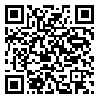دوره 15، شماره 3 - ( 3-1403 )
جلد 15 شماره 3 صفحات 316-301 |
برگشت به فهرست نسخه ها
Download citation:
BibTeX | RIS | EndNote | Medlars | ProCite | Reference Manager | RefWorks
Send citation to:



BibTeX | RIS | EndNote | Medlars | ProCite | Reference Manager | RefWorks
Send citation to:
Adavi H, Kowsar R, Radahmadi M, Alaei H. Comparing Various Types of Chronic Psychological Stress on Cognitive Functions and Behaviors in Rats. BCN 2024; 15 (3) :301-316
URL: http://bcn.iums.ac.ir/article-1-2689-fa.html
URL: http://bcn.iums.ac.ir/article-1-2689-fa.html
Comparing Various Types of Chronic Psychological Stress on Cognitive Functions and Behaviors in Rats. مجله علوم اعصاب پایه و بالینی. 1403; 15 (3) :301-316
Comparing Various Types of Chronic Psychological Stress on Cognitive Functions and Behaviors in Rats
چکیده:
Introduction: Psychological stress impairs cognitive performance and affects mood states. This study compares the effect of four types of psychological stress (crowding, relocation, isolation, and restraint) on locomotor activity, learning, and memory, as well as anxiety-like behaviors performed by the open field, elevated plus maze, and passive avoidance tests.
Methods: Wistar rats were randomly assigned to different groups of crowding, relocation, isolation, and restraint stress, and control. The stress induction was administered for 21 consecutive days (6 h/day). To evaluate various types of behaviors, the open field, elevated plus maze, and passive avoidance tests were employed.
Results: According to the PA test results, the latency to enter the darkroom decreased significantly in all stress groups, especially in the crowding and isolation stress groups. However, it had an inverse relationship with serum corticosterone (CORT) levels. The total dark stay time increased significantly in the restraint and crowding stress groups, and also particularly, in the isolation stress group. In the isolation stress group, the number of darkroom entries decreased significantly. All stress groups spent a significantly shorter time in the open arms of the EPM apparatus. Finally, the total distance traveled, in the open field test was significantly lower in all stress groups, particularly in the isolation stress group.
Conclusion: Crowding and social isolation were the two stress types that had the most adverse effect on cognitive performance, as they induced stress-driven anxiety-like behaviors, probably due to increased CORT secretion. A high or low population of social density may create a condition, in which the nervous system could not efficiently manage stress, particularly at chronic levels.
Methods: Wistar rats were randomly assigned to different groups of crowding, relocation, isolation, and restraint stress, and control. The stress induction was administered for 21 consecutive days (6 h/day). To evaluate various types of behaviors, the open field, elevated plus maze, and passive avoidance tests were employed.
Results: According to the PA test results, the latency to enter the darkroom decreased significantly in all stress groups, especially in the crowding and isolation stress groups. However, it had an inverse relationship with serum corticosterone (CORT) levels. The total dark stay time increased significantly in the restraint and crowding stress groups, and also particularly, in the isolation stress group. In the isolation stress group, the number of darkroom entries decreased significantly. All stress groups spent a significantly shorter time in the open arms of the EPM apparatus. Finally, the total distance traveled, in the open field test was significantly lower in all stress groups, particularly in the isolation stress group.
Conclusion: Crowding and social isolation were the two stress types that had the most adverse effect on cognitive performance, as they induced stress-driven anxiety-like behaviors, probably due to increased CORT secretion. A high or low population of social density may create a condition, in which the nervous system could not efficiently manage stress, particularly at chronic levels.
نوع مطالعه: Original |
موضوع مقاله:
Behavioral Neuroscience
دریافت: 1402/1/20 | پذیرش: 1402/2/18 | انتشار: 1403/2/12
دریافت: 1402/1/20 | پذیرش: 1402/2/18 | انتشار: 1403/2/12
| بازنشر اطلاعات | |
 |
این مقاله تحت شرایط Creative Commons Attribution-NonCommercial 4.0 International License قابل بازنشر است. |





